San Lorenzo is a Joe Lee course of 1988 and, although it is located in the enormous Quinta do Lago estate on the Algarve, it is not owned by Q d L, but by the Meridien Dona Filipa hotel. I didnít stay there, but they were very helpful, offering to make me up in a four ball, give me a buggy etc.. But I chose not to play, simply to walk. It saved me several hours, allowed me to go at my own pace, to watch others reveal to me the qualities of the course, to take whatever photos I wanted, and to see the course from whatever angle I wanted to, not my customary left-handerís slice position deep in the rough or trees on the far left.
On reflection I came to the conclusion that it was a very clever course. It enabled average players to get round comparatively unscathed, yet giving them the excitement of a few picture postcard holes, one or two water carries and several opportunities to go for death or glory. I saw nobody (and I saw a lot of people, the course was very crowded) who will have broken 100, yet it did not break them. On the other hand I could see the challenge for the good player, were ever a professional tournament to be held here (none has been).
The key is the greens. Their gestures are big Ė even if occasionally shallow from front to back Ė but they always offer sensible, easy-access pin positions for everyday play (as you will see from the photographs), yet there are sufficient exacting pin positions to grant more testing tournament locations. In that respect I was reminded of the huge greens at El Saler, which I revisted shortly after.
It was clear that the greens were very slow, but they get huge traffic. Play, as I observed it, was from sensibly placed yellow tees from which few displayed any capacity to reach the fairway bunkers, which were clearly ideally placed for the 280-300 yard driver playing from the back. The bunkers themselves offer little challenge, but it wouldnít take much to raise and steepen faces were the stars ever to take the course on, and Ė as at El Saler Ė the most cunning putting surface contours are those protected by or hidden behind bunkers.
San Lorenzo is not a long course, with a length of 6,825 yards and a par of 72. Only four two-shot holes are 400 yards or longer. I doubt that the course could be lengthened by much because of adjacent housing and roads, land forms and water. With the routing effectively two circles, the wind must be tackled from all quarters and the short holes face different directions.
1. 540 yards par 5.
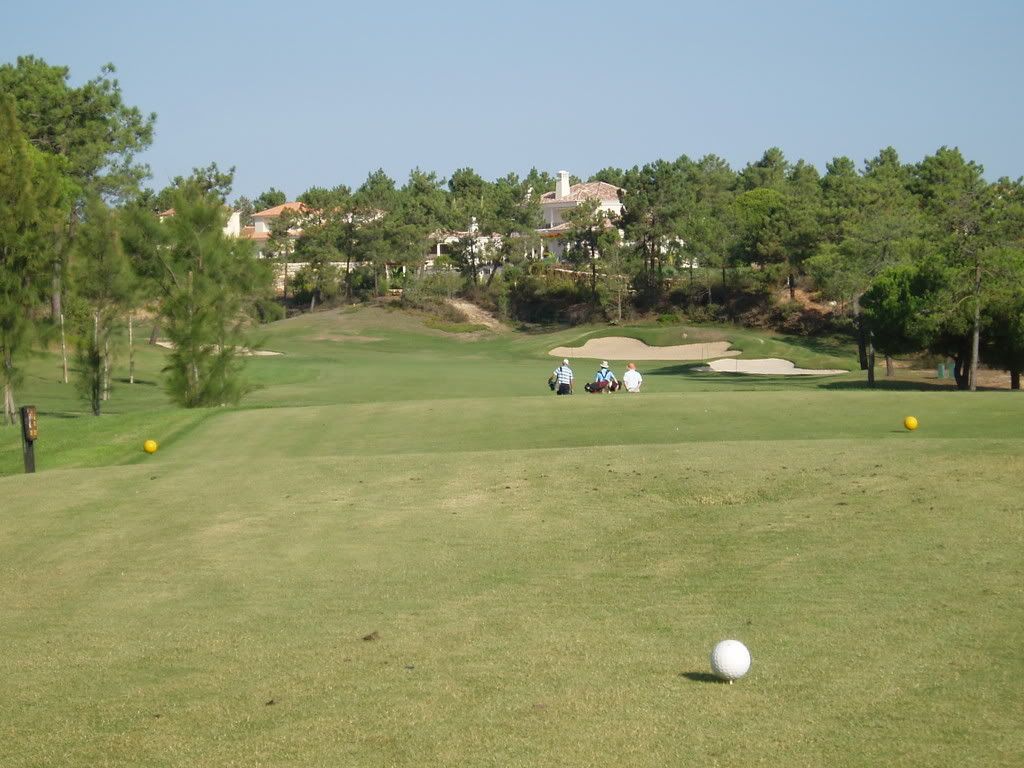
A double dog-leg driving first towards a left-hand elbow. The proximity of housing is all too apparent.
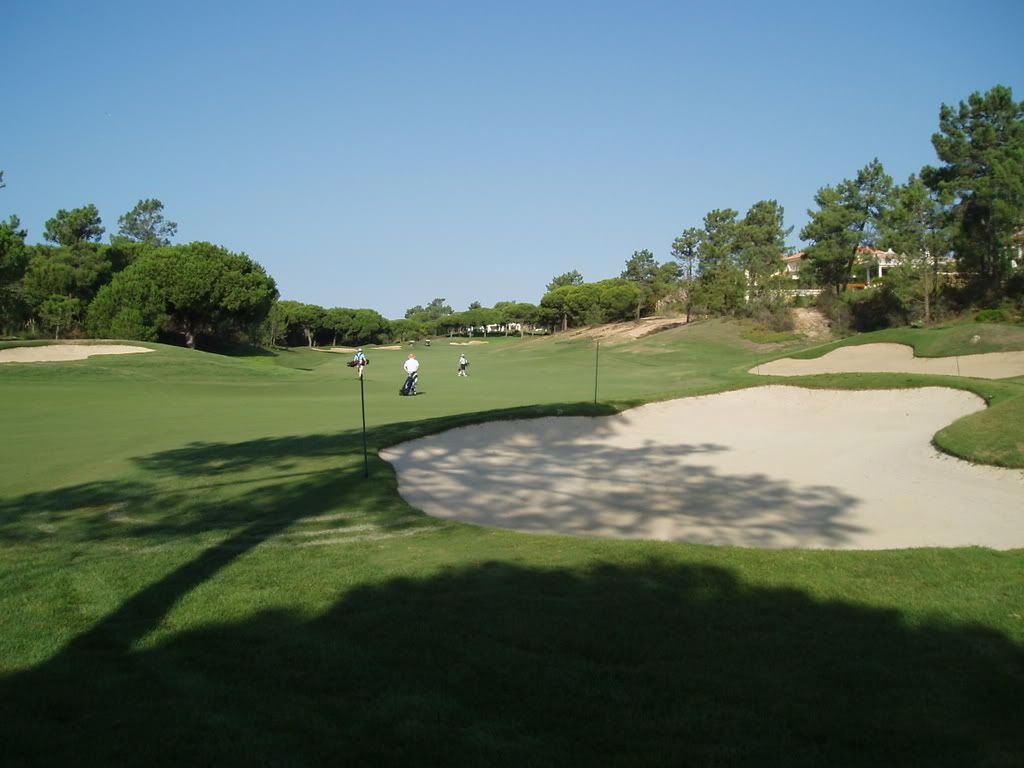
After the dog-leg the fairway climbs gently.
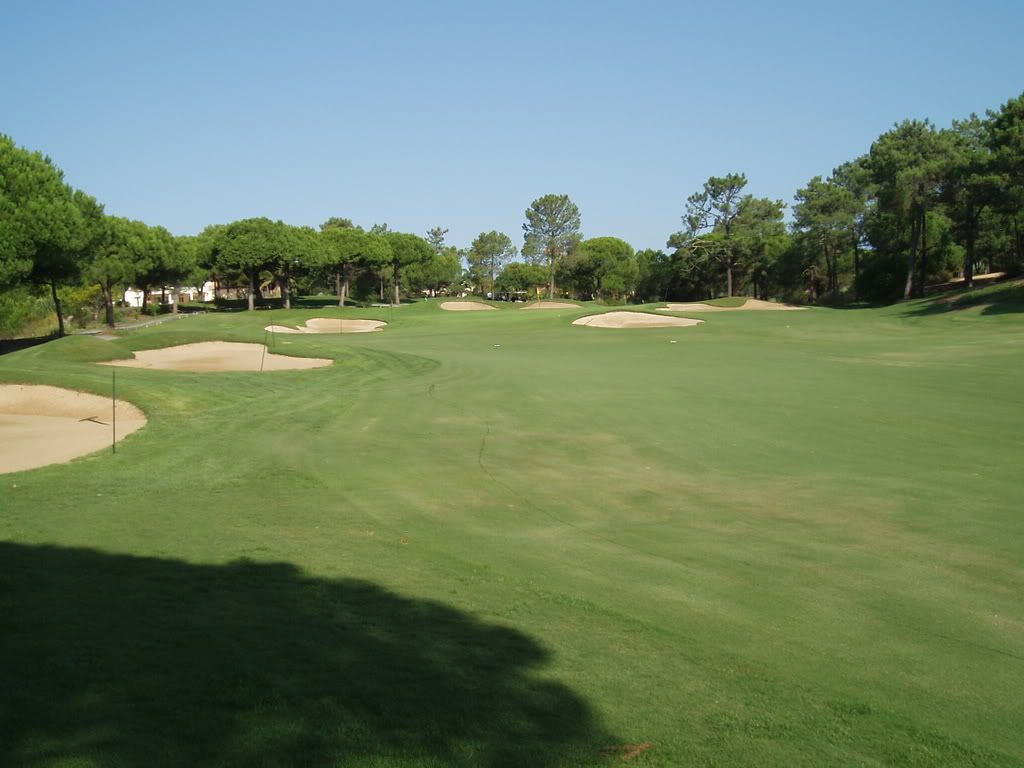
As you can see there is plenty of room on the left for everyday pin positions but on the right, behind the bunkers, the putting surface is more complex.
2. 177 yards par 3.
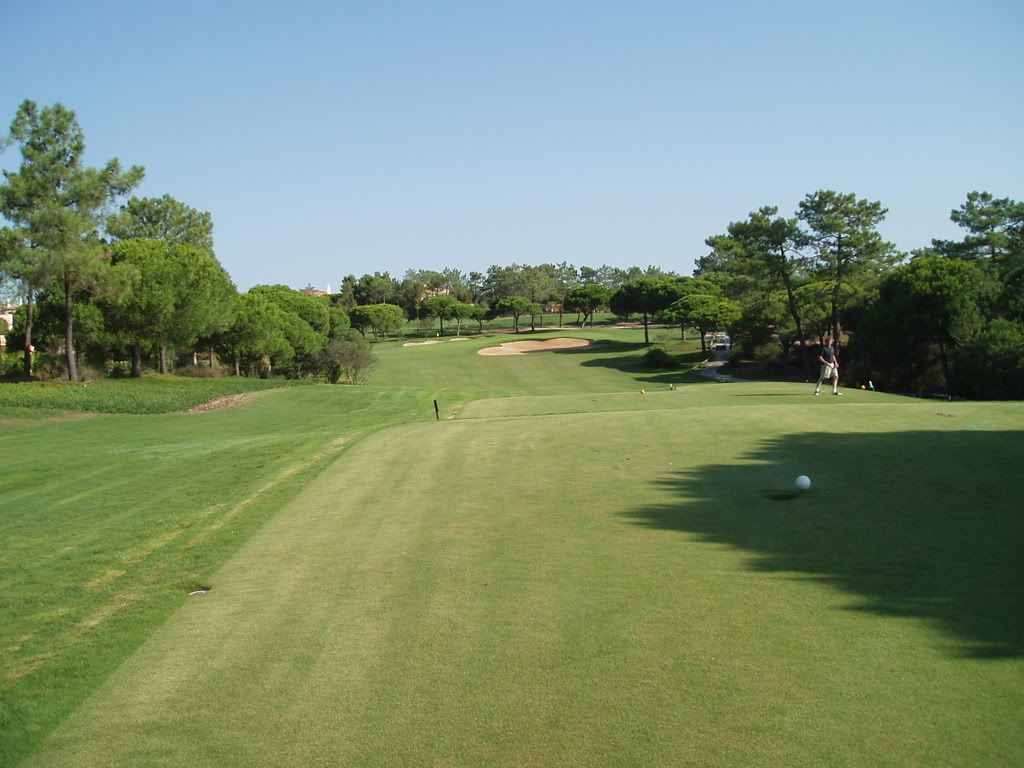
Again plenty of easy access front left, with greater slope to the shallow, angled putting surface to the right.
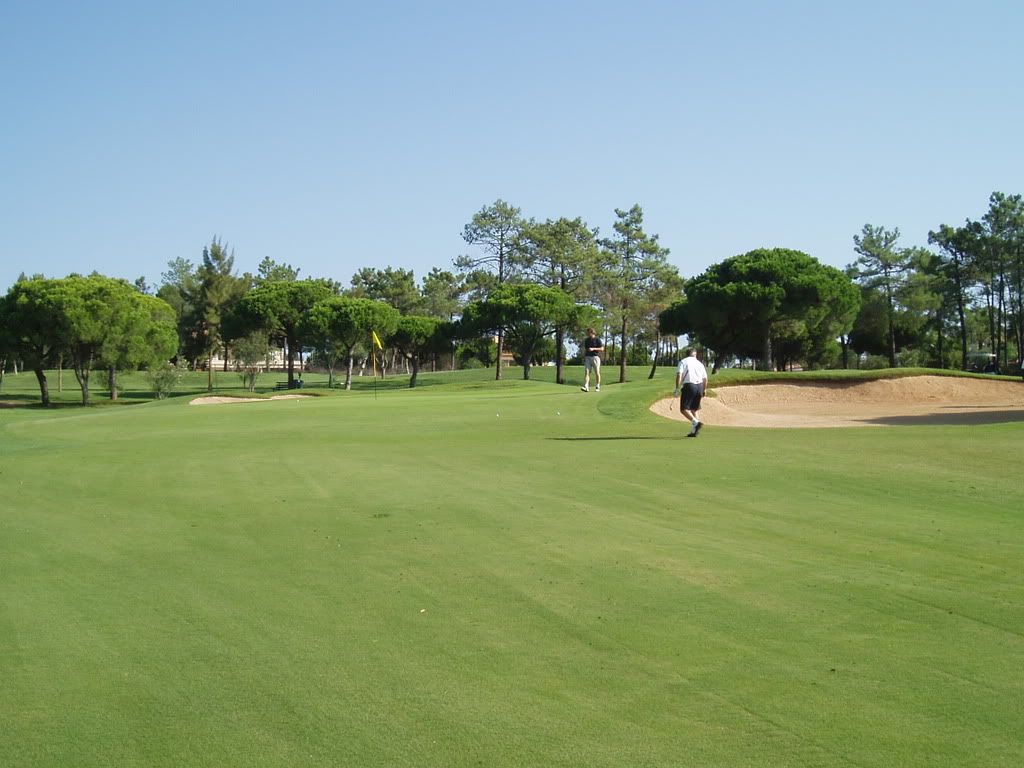
The contours are more apparent in this view.
3. 365 yards par 4.

One of those teasing holes inviting the big hitter to bite off some of the sharp dog-leg.
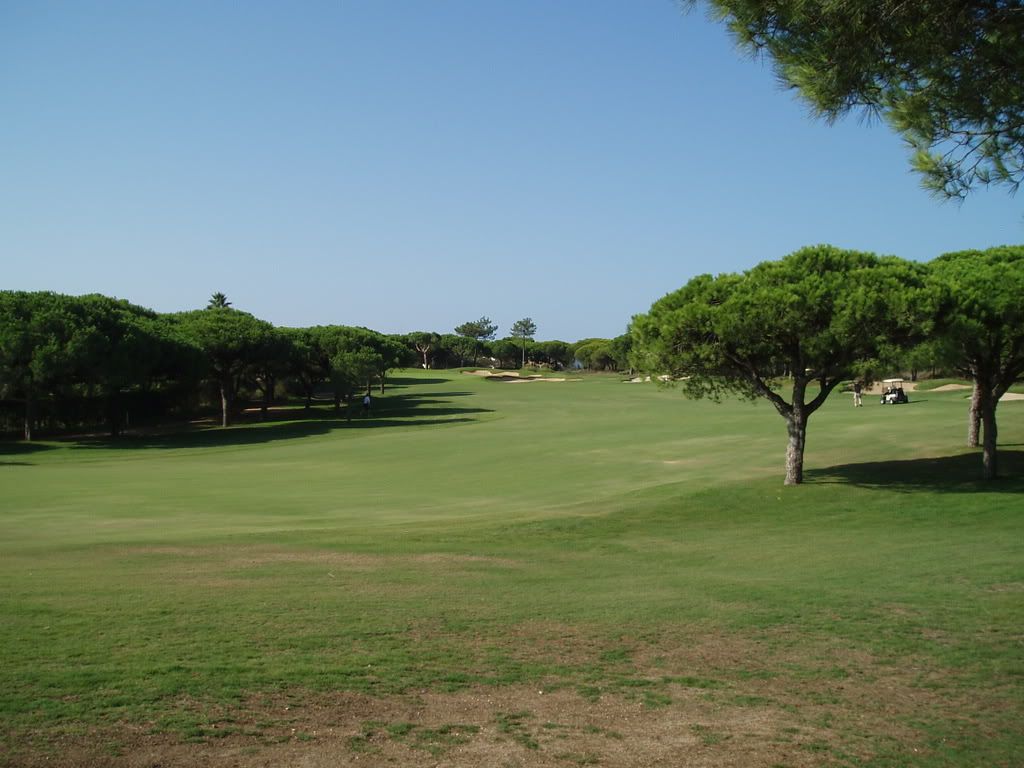
Cutting it too fine may leave no shot to the green although left is the better side to be.
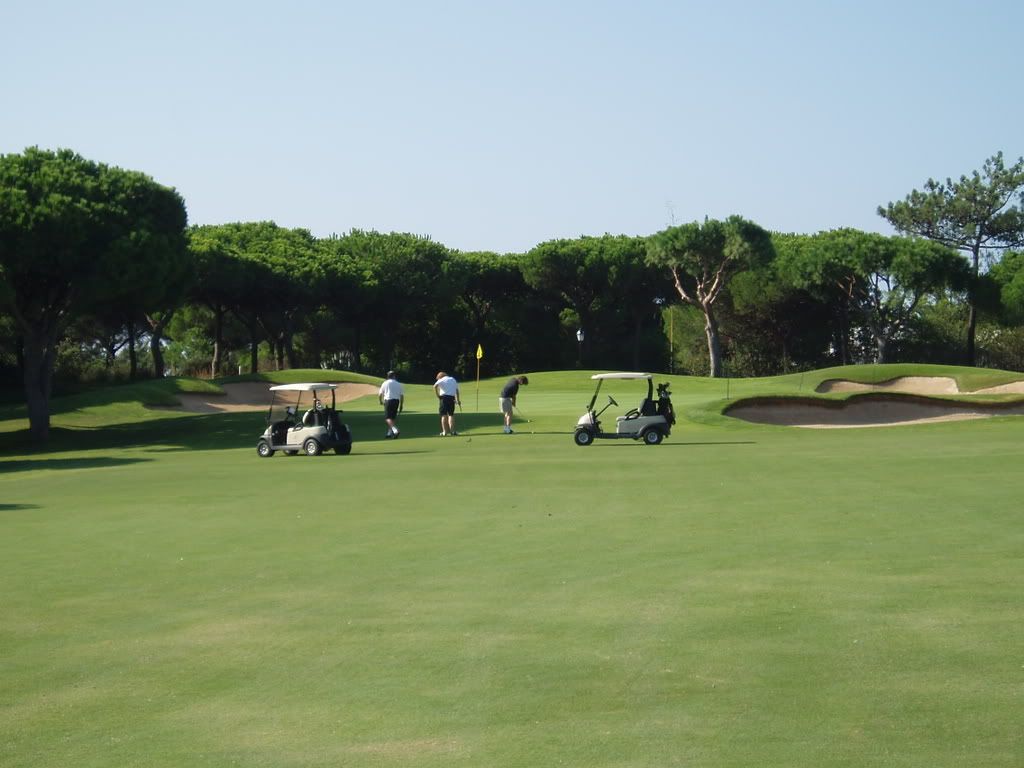
Here we go again with a hackerís entrance on the left and one or two more interesting locations on the right.
4. 372 yards par 4.

This group waited on the tee for a quarter of an hour as they wanted to attempt to clear the fairway bunkers.

Well-placed bunkers on the inside of the dog-leg tempt many to try to clear them.
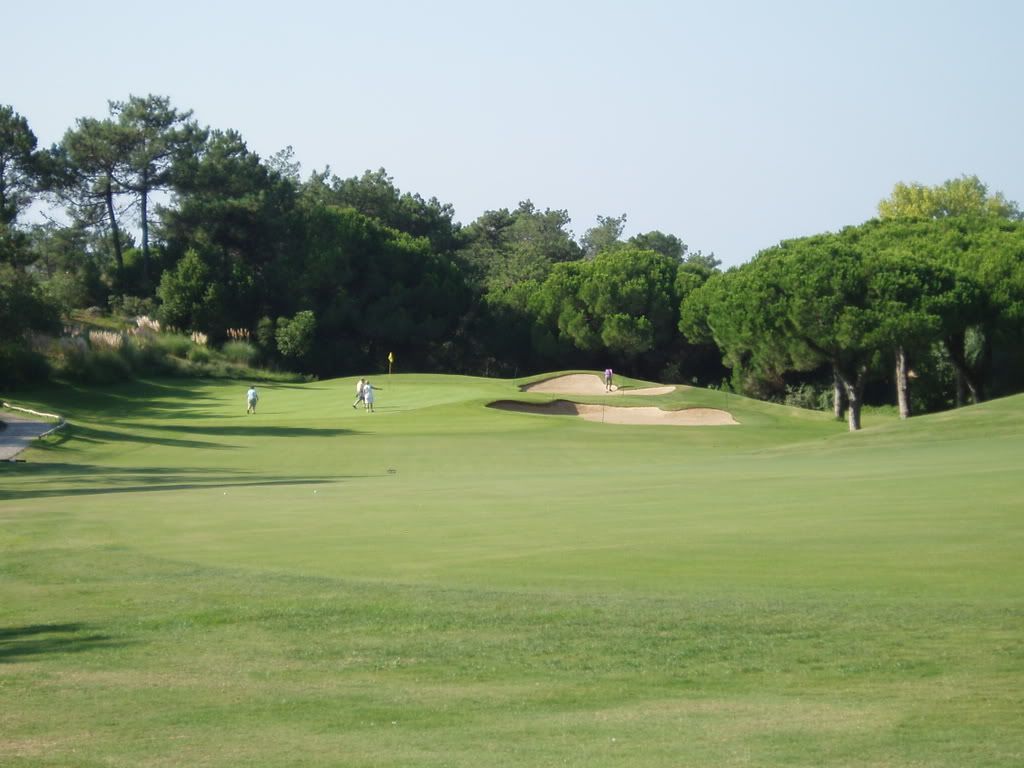
Again an easy opening on the left, but the slopes push the approach shot towards the rough on the left.
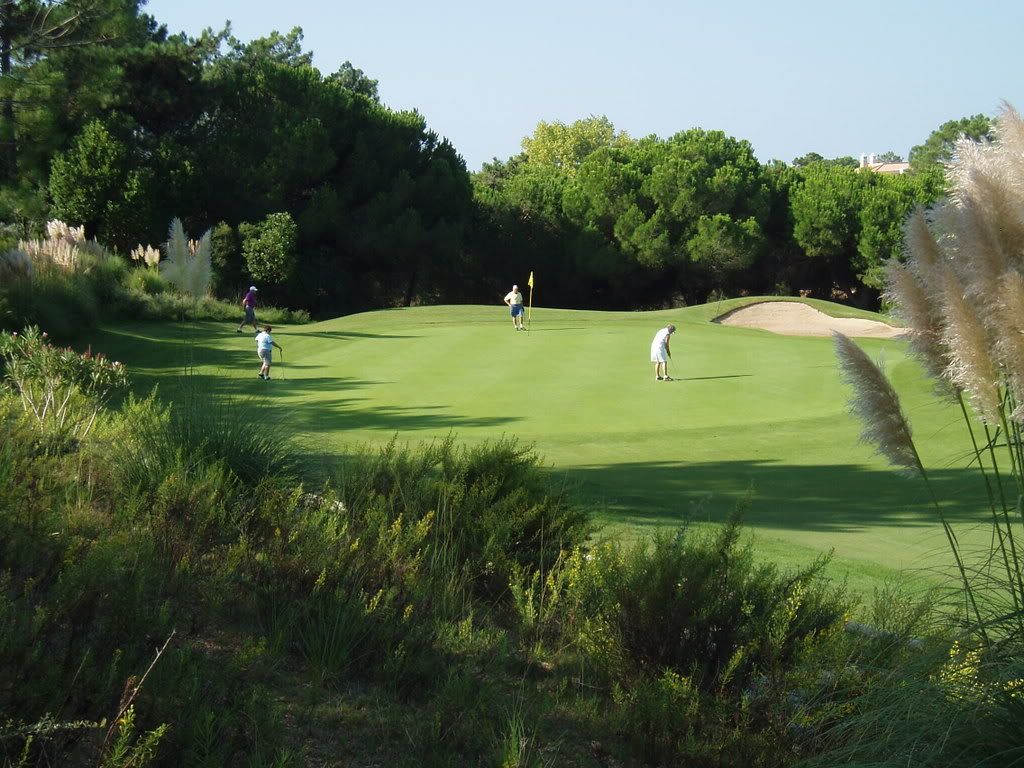
There is just enough slope on the green to give some testing longer putts.
5. 143 yards par 3.
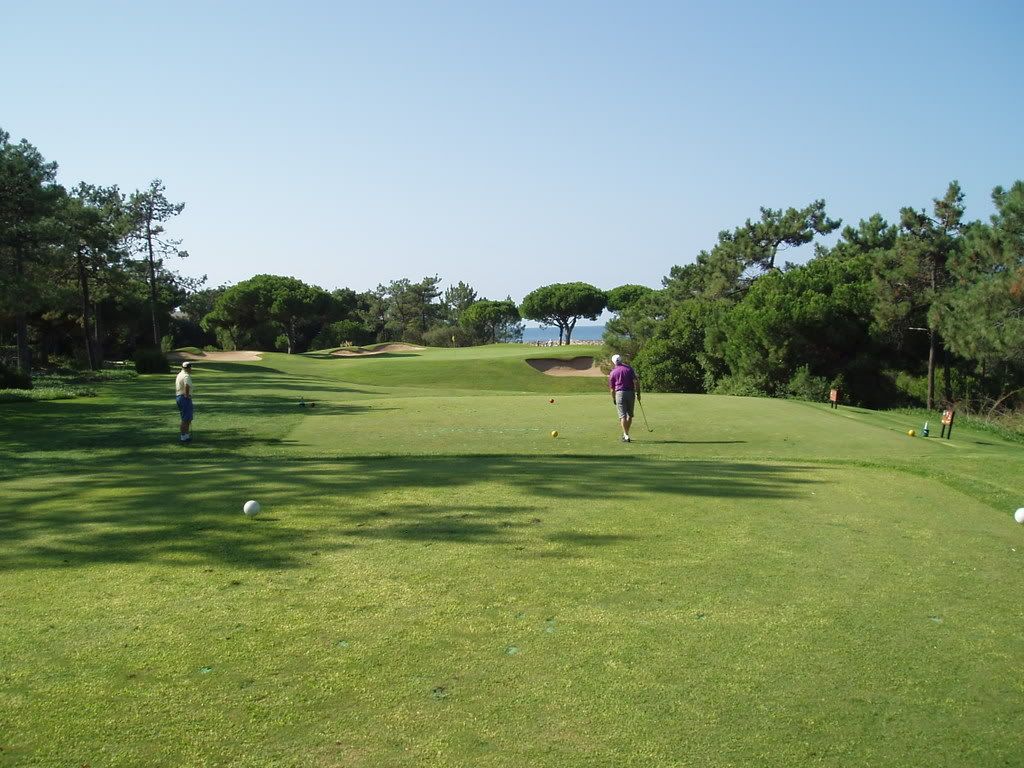
A first (distant) glimpse of the Atlantic.

At last we get to the picture postcard stuff.
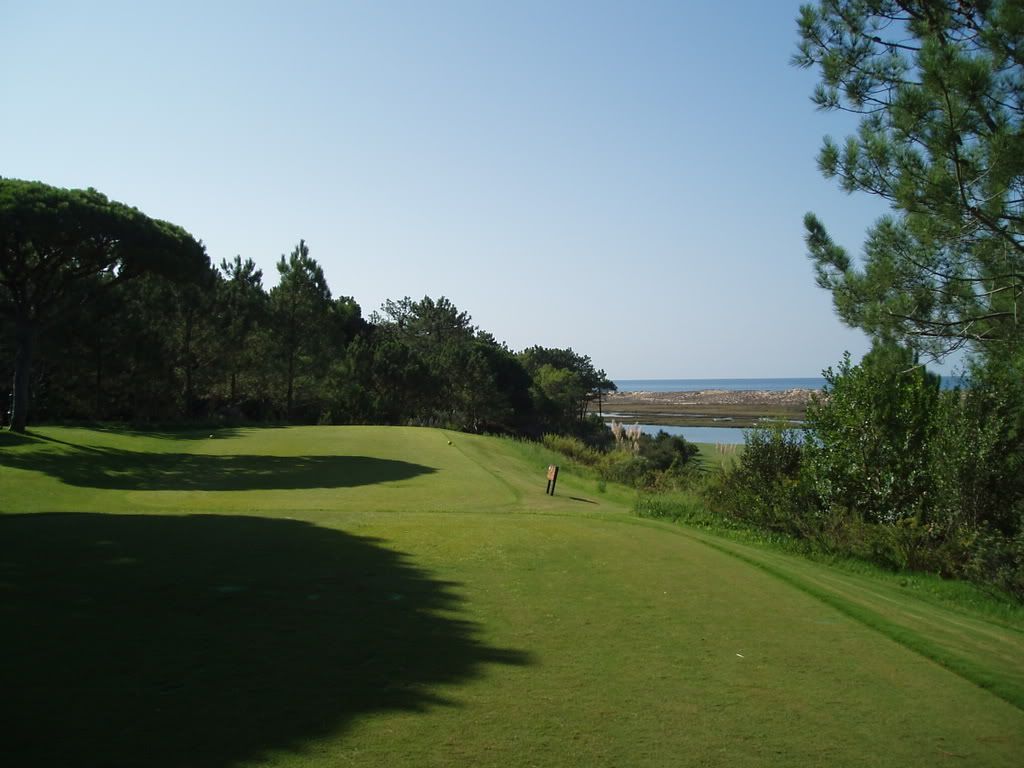
Donít, whatever you do, drive where the tee is pointing!
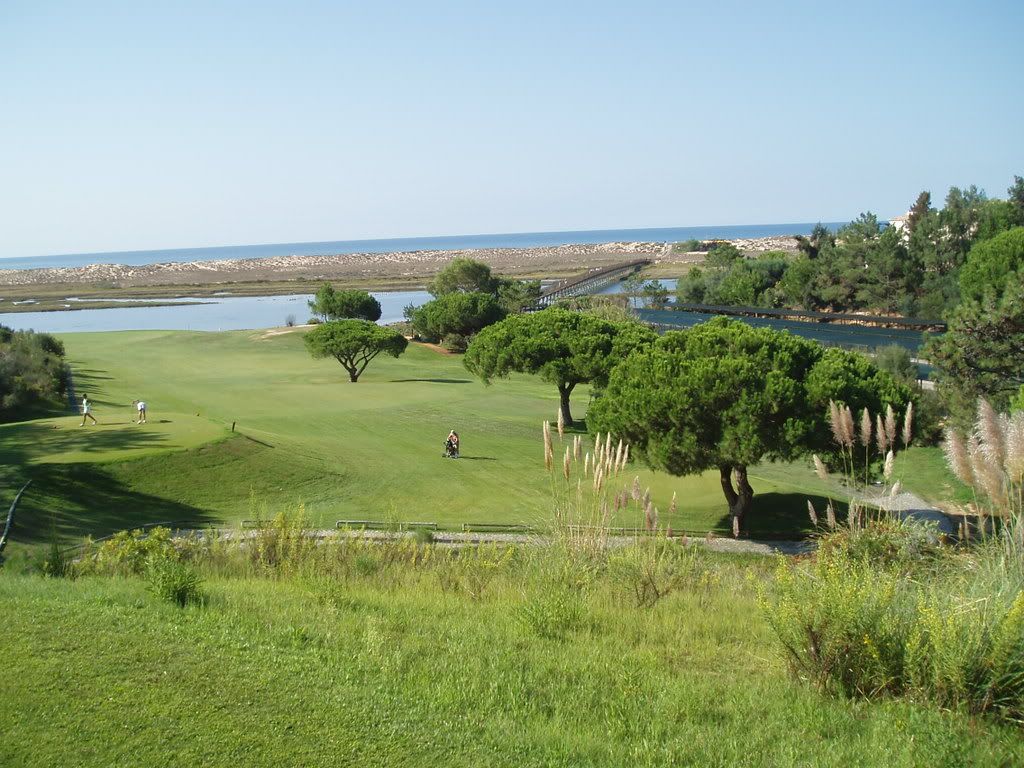
Alignment should be easier for the ladies.
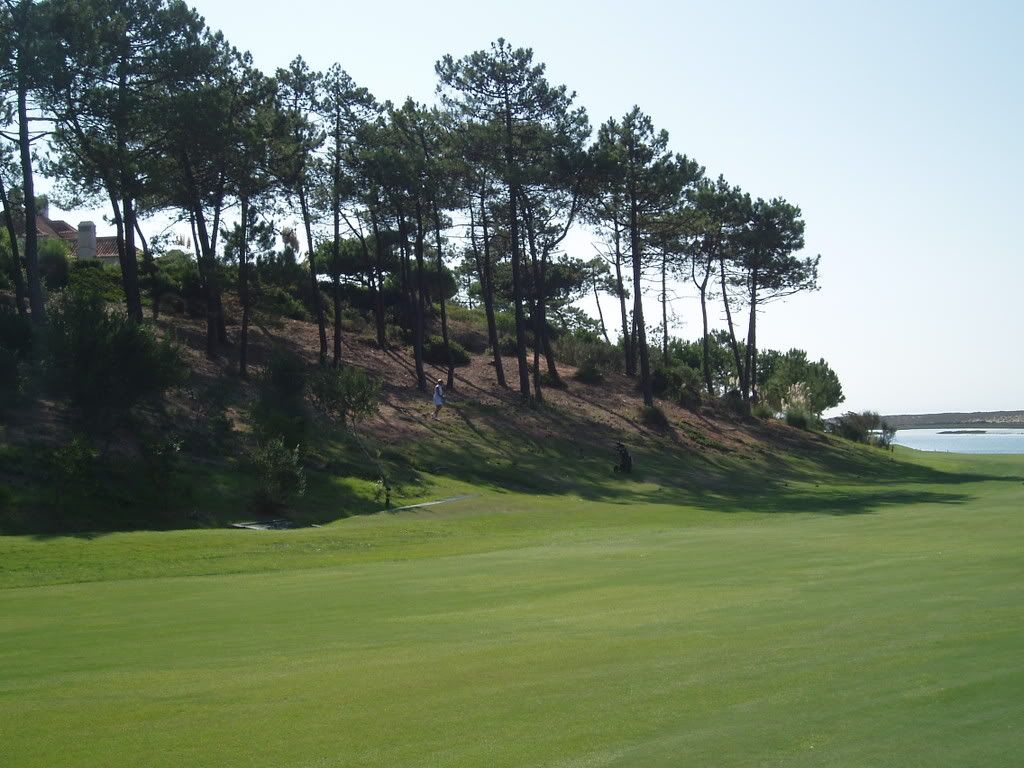
Sorry, I was wrong!
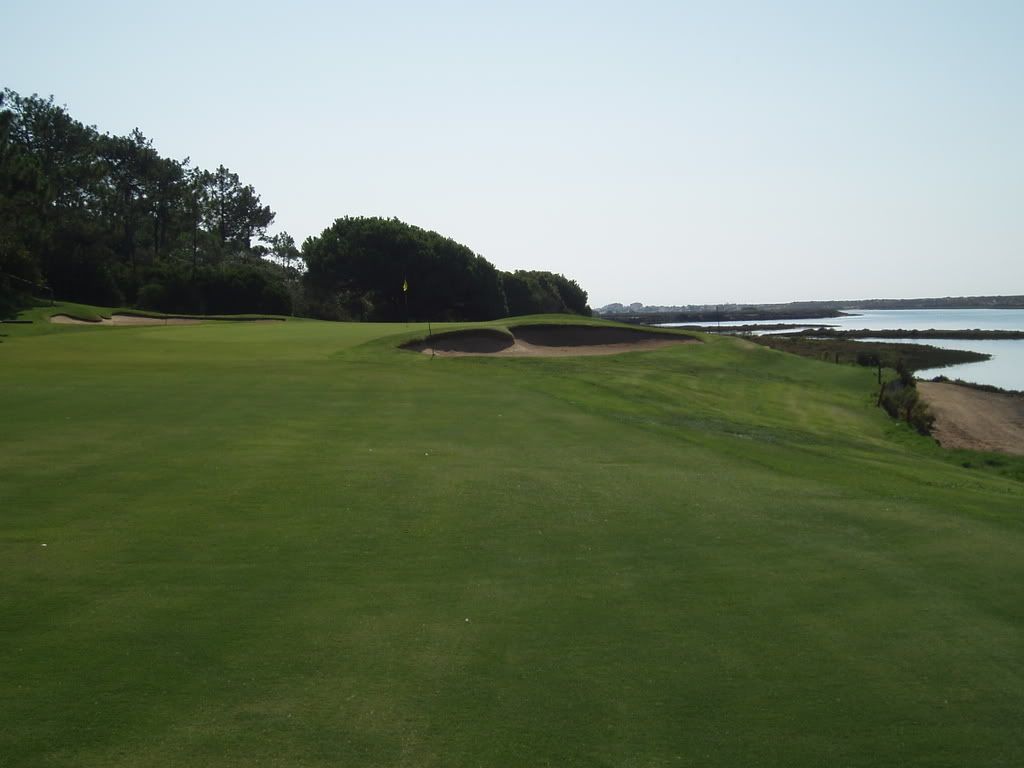
The Ria Formosa on the right is played as a lateral water hazard.

Scenic, isnít it!
7. 377 yards par 4.
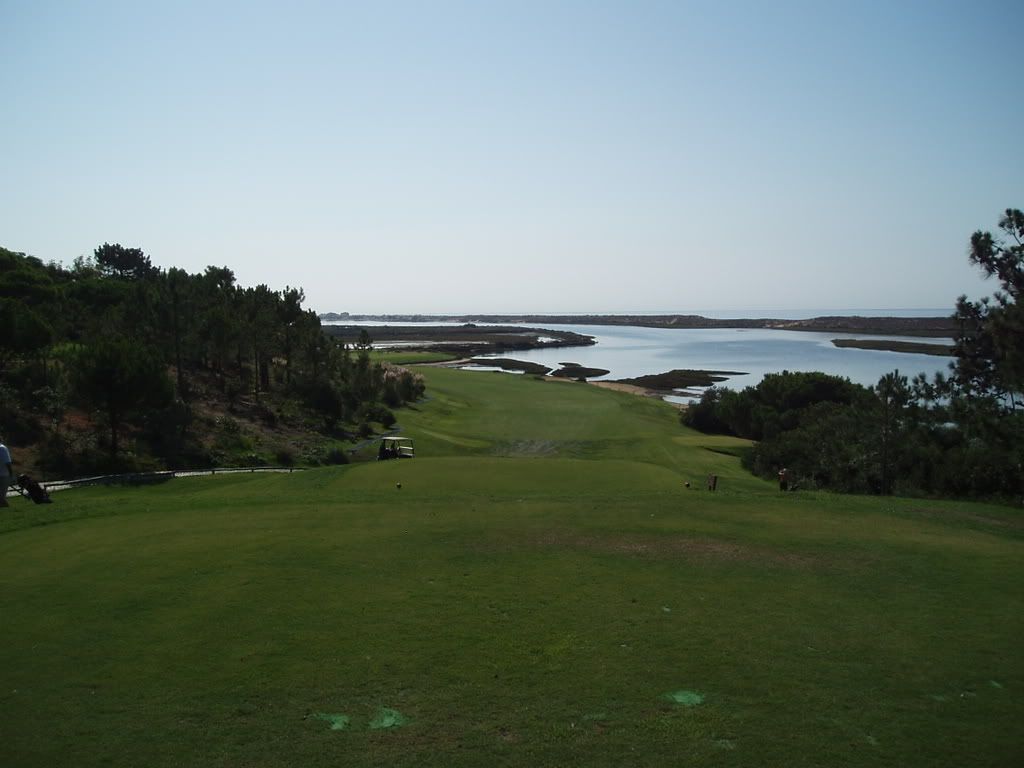
Similar sort of drive and, as on the previous hole, the worse fate may be to drive onto the hill on the left than to find the beach.

You can see the green already and the incursion of beach (or water at high tide) just in front of it.
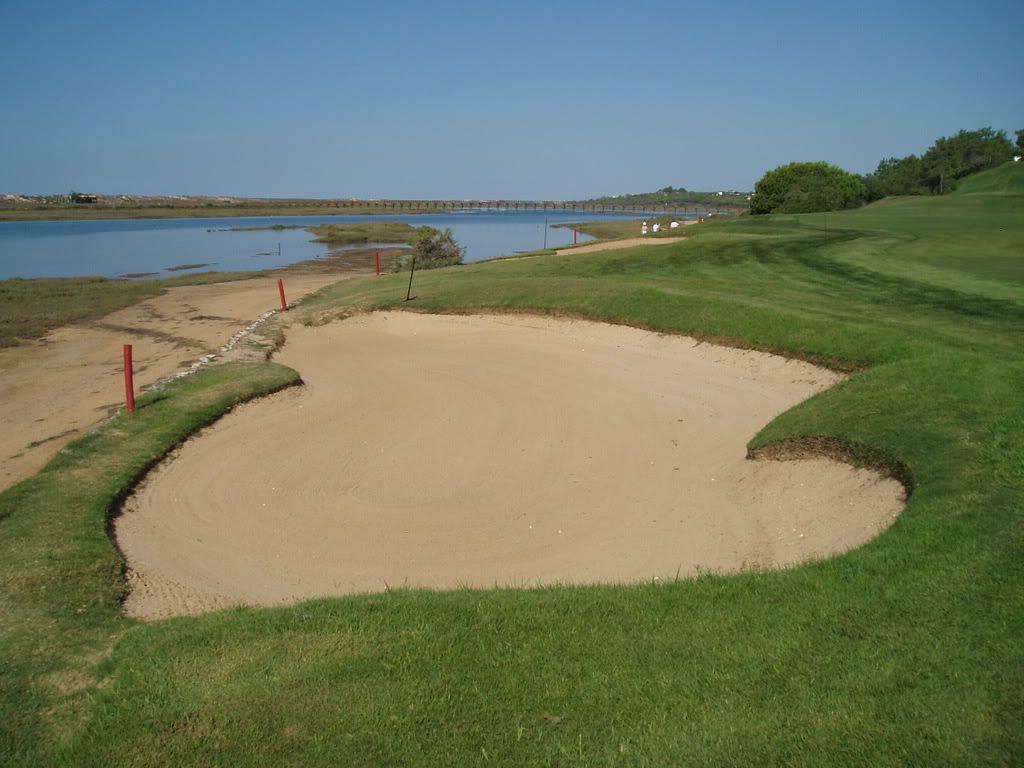
Not quite sure what this bunker is for.
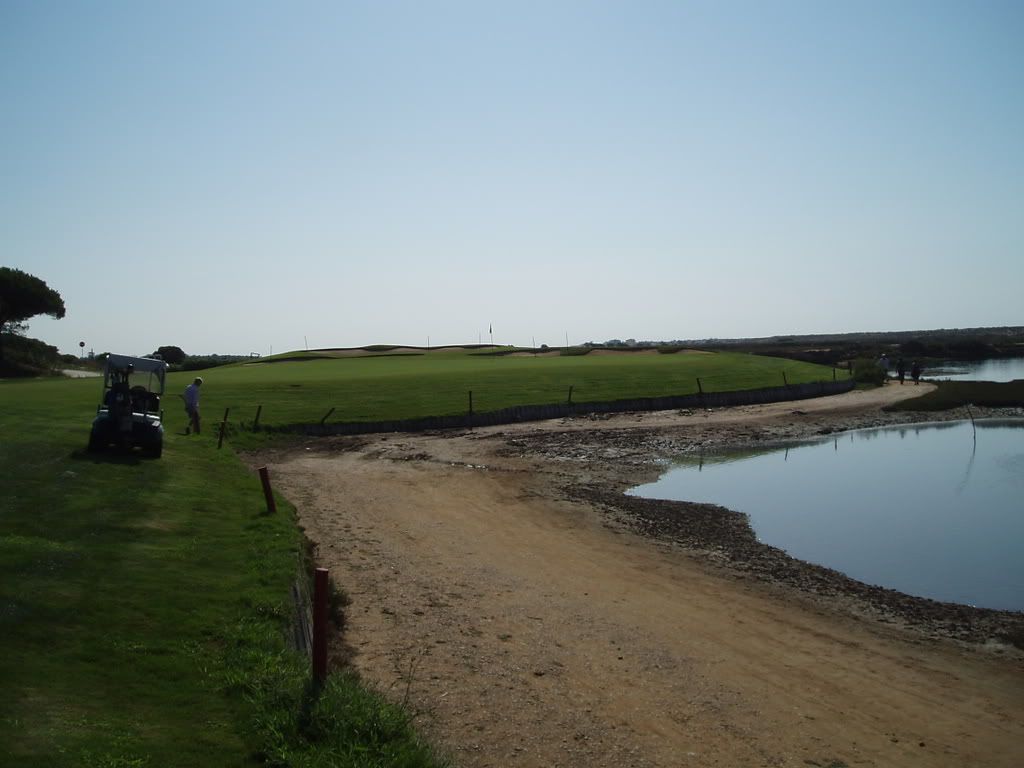
Why did you hit it there?
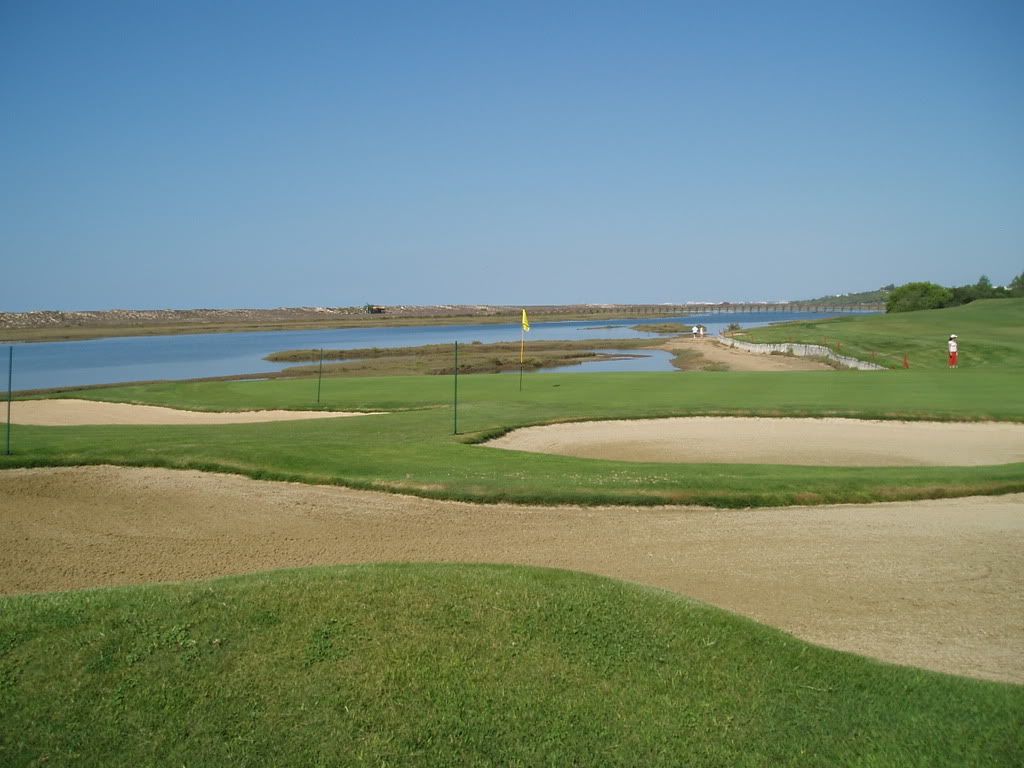
Probably because these bunkers await through the back of the green.
8. 574 yards par 5.
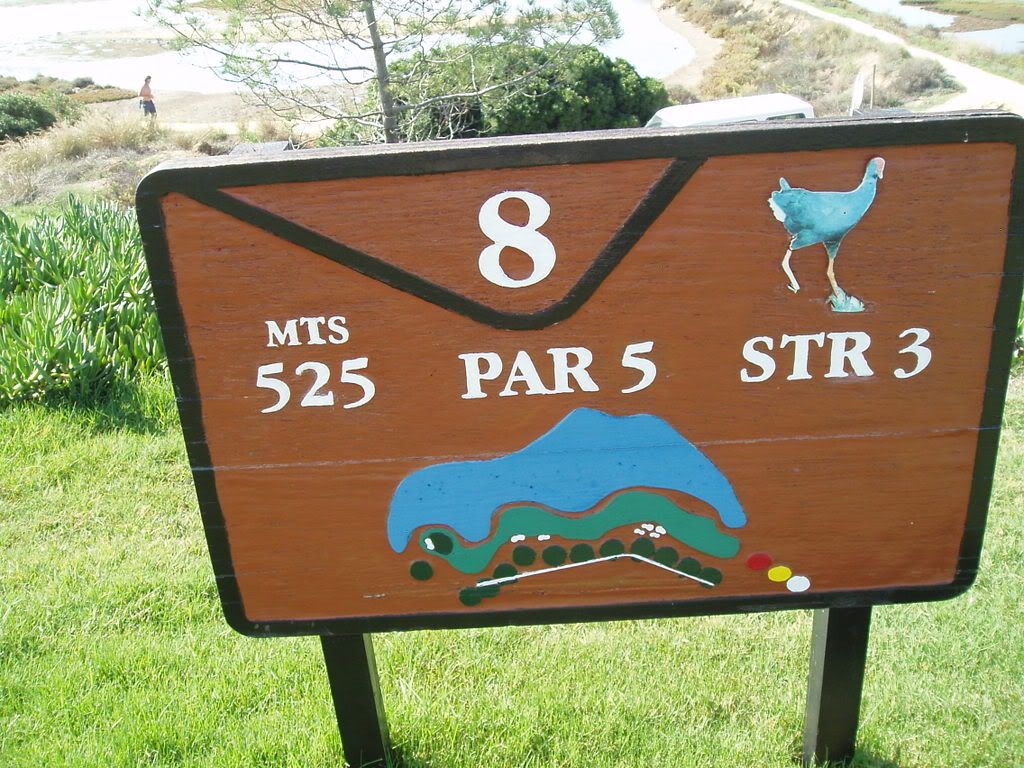

A lagoon on the right is of concern to slicers all the way to the green. Anyone aspiring to get on in two must fly the bunkers on the left around which the fairway bends.
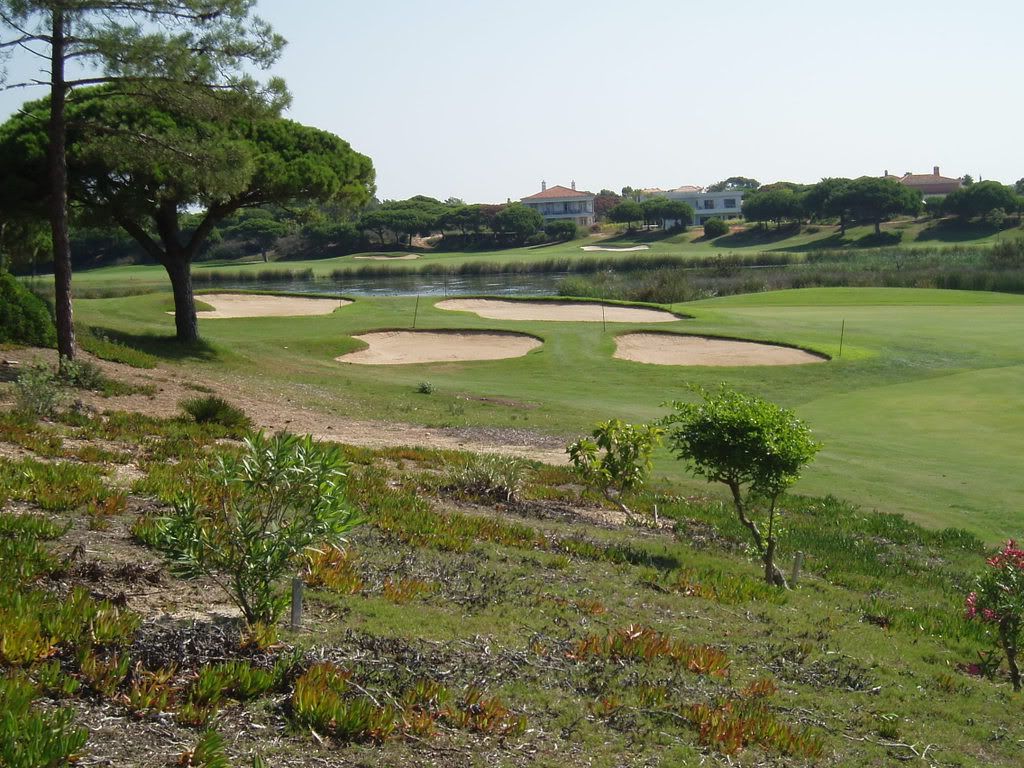
A closer look at those bunkers.
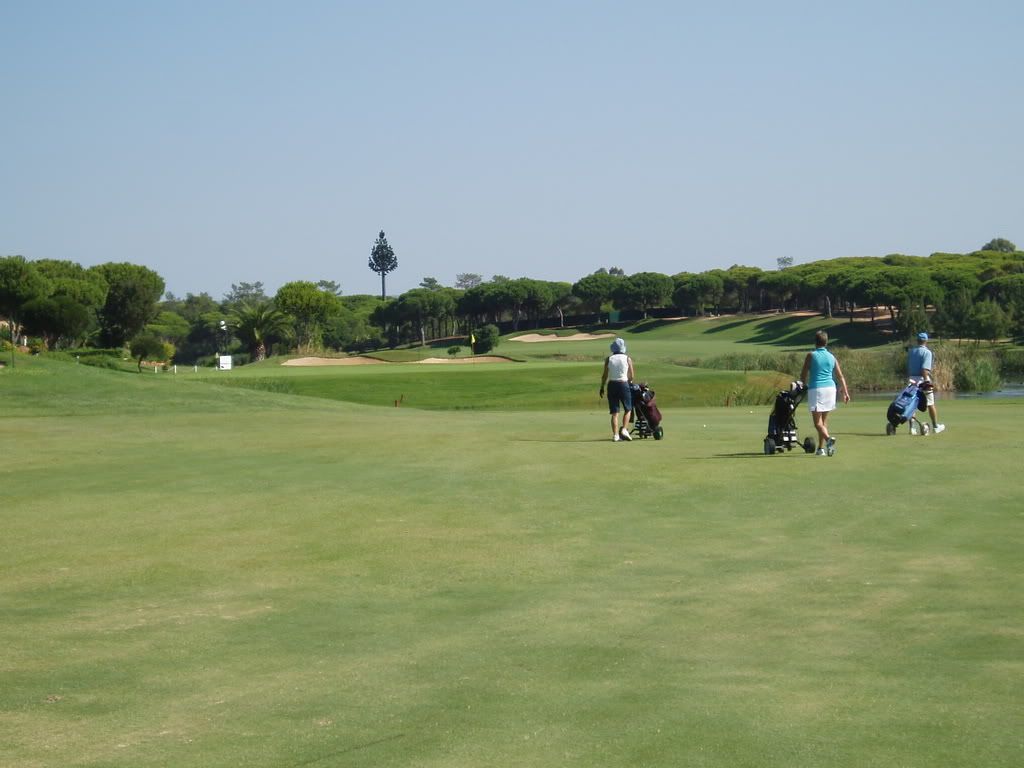
Eventually, as you near the green, a stretch of lagoon interrupts the fairway. That monstrosity on the skyline is a mobile phone mast Ė how coy!
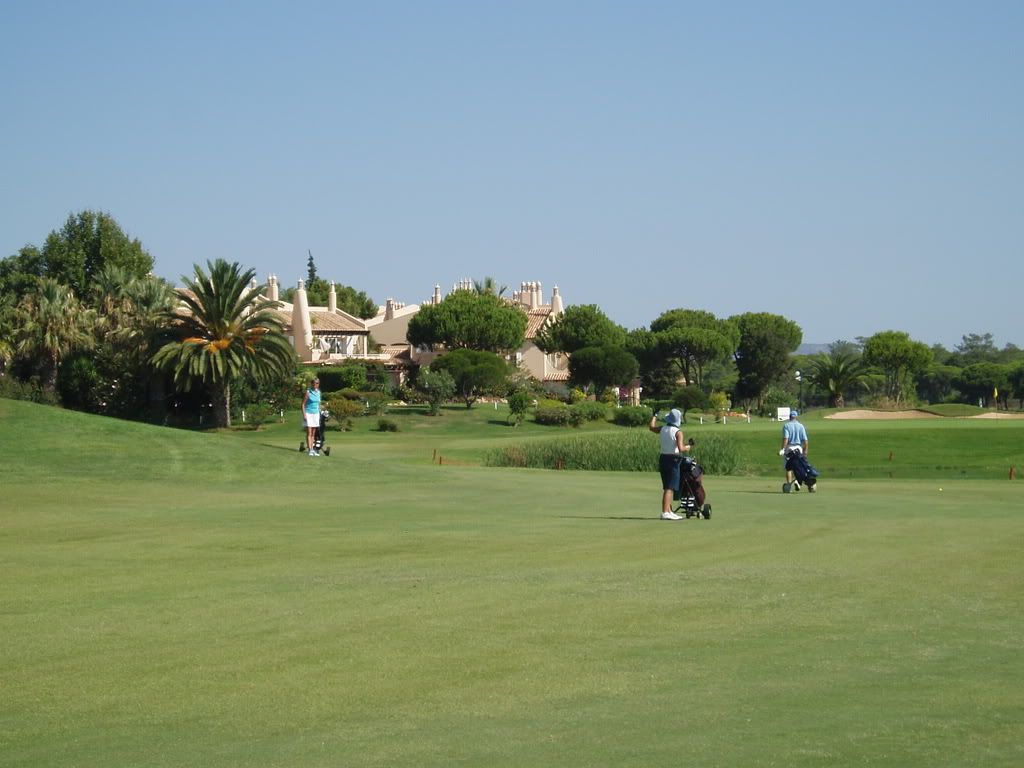
There is, of course, an alternative route for those who are afraid of the water carry. This is the most pretentious housing of the round.
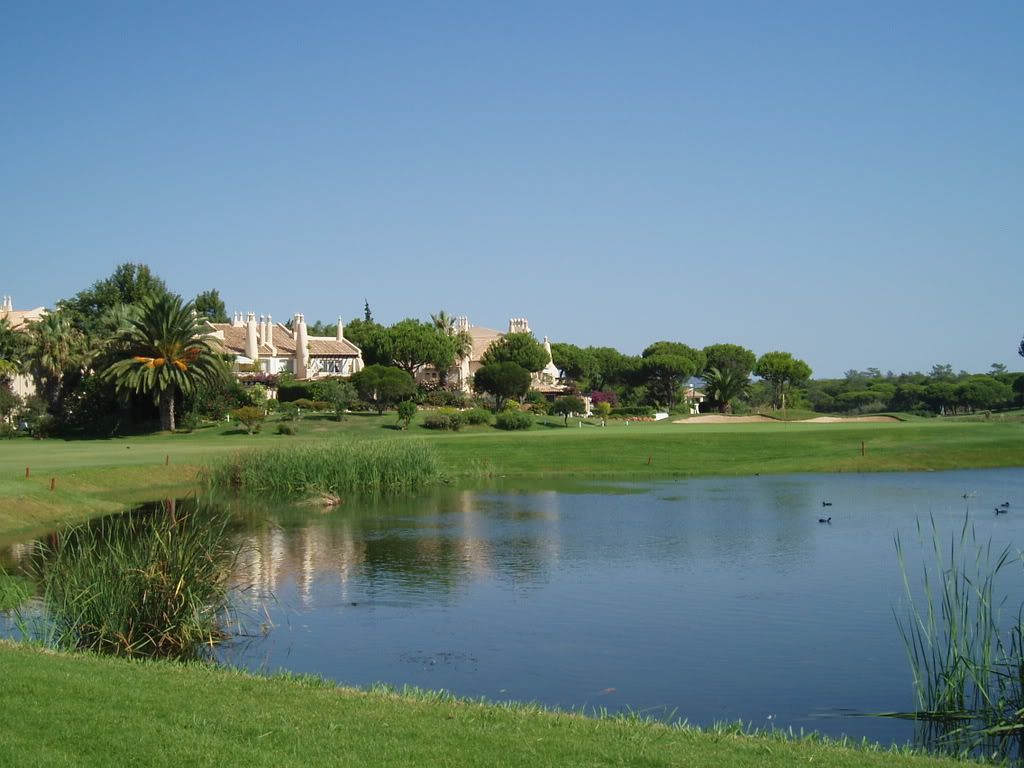
The putting surface is only about 20 yards deep, so the idea of firing at it from 270 yards out is inconceivable.
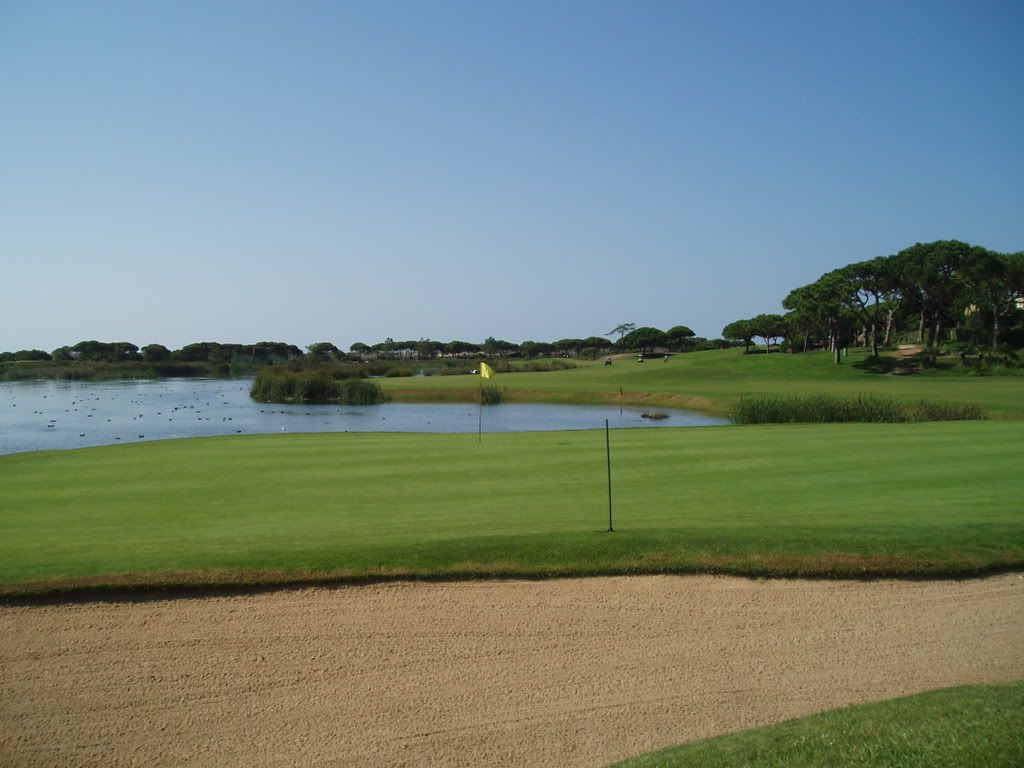
8th green viewed from behind.
9. 400 yards par 4.
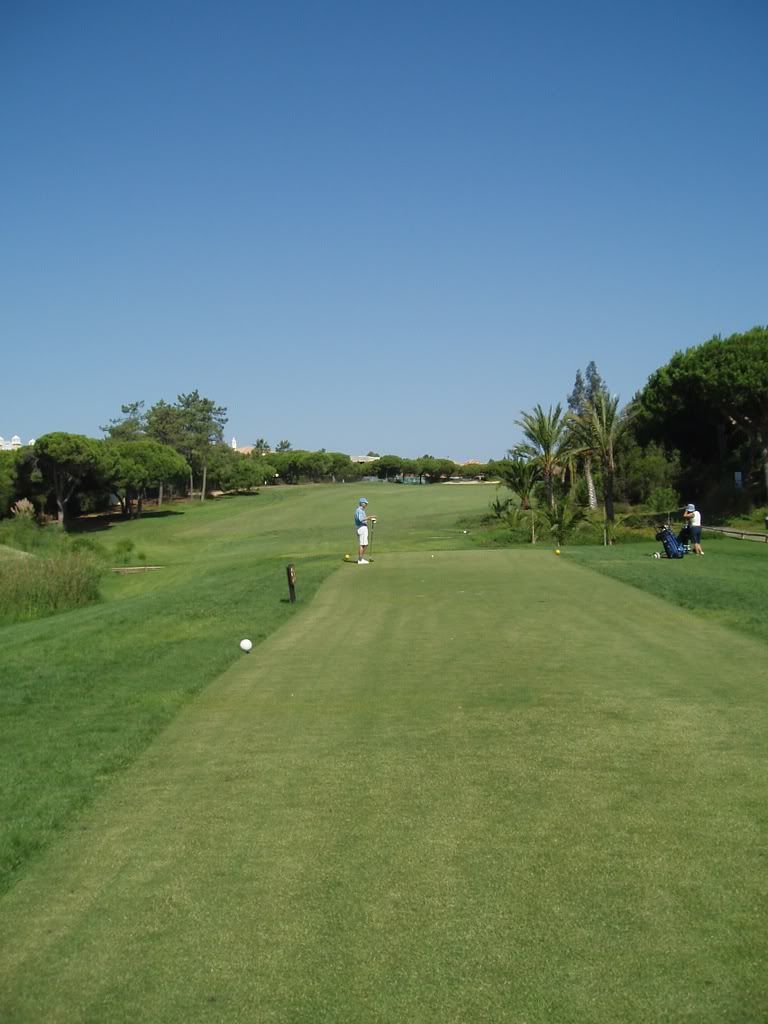
The fairway climbs and moves to the right from the tee.

You cannot see this right-side bunker from the tee.
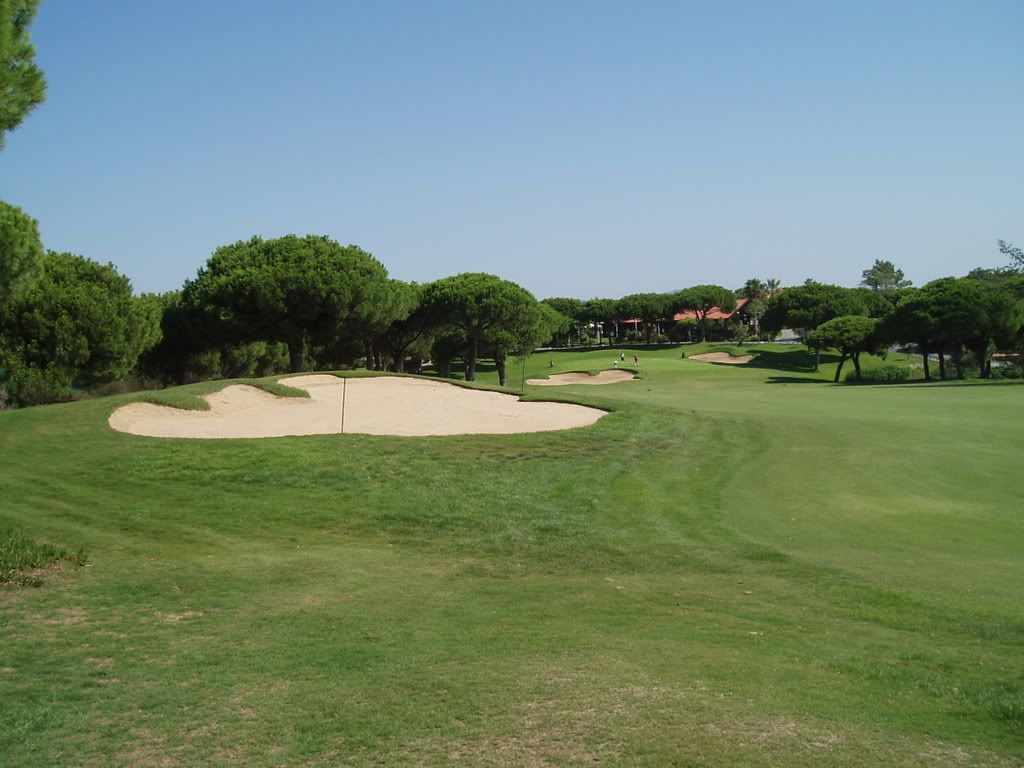
At the top of the hill the fairway swings to the right and downhill.

This time the green-front opening is on the right, with quite a lot of movement on the left of the green.

9th green seen from behind.